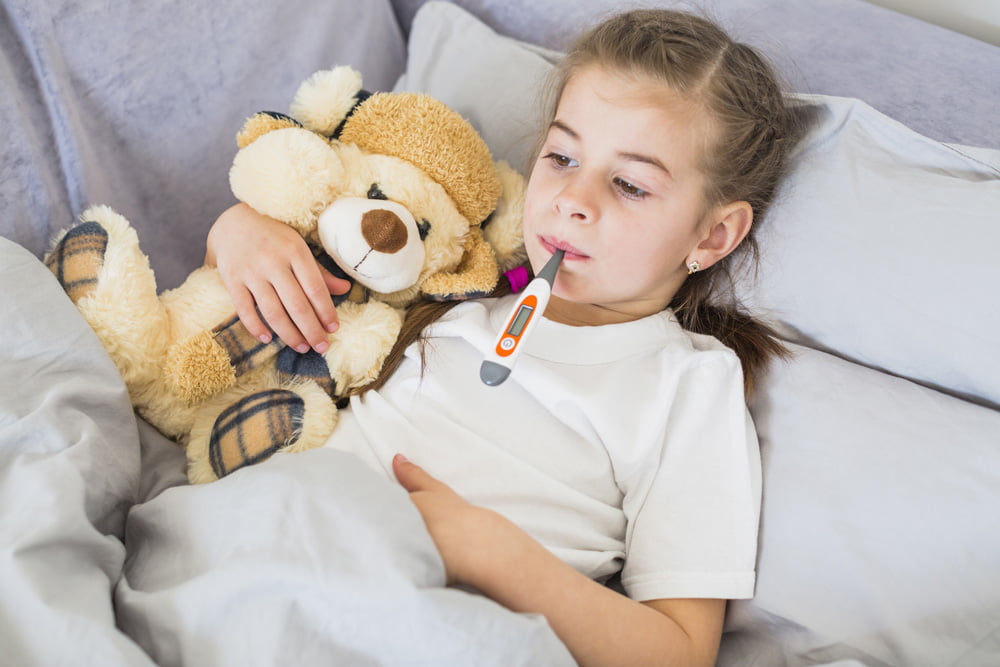As the winter air sets in, Ohio faces an alarming health challenge: a surge in pediatric pneumonia cases, particularly in Warren County.
This article delves into this concerning phenomenon, offering insights into its nature, implications, and the collective response it demands.
By understanding the pediatric pneumonia’s outbreak scope, symptoms, and prevention strategies, readers can gain valuable knowledge to safeguard the health of our young ones.
Ohio Pediatric Pneumonia: A Closer Look

In late 2023, Ohio became the epicenter of a perplexing health crisis. Warren County reported a startling rise in pediatric pneumonia, with over 140 cases since August.
Former CDC Director Tom Frieden suggested an “immunity gap” due to COVID-19 lockdowns as a potential cause, leaving children more vulnerable to various infections. Despite the increasing numbers, experts assured that the pathogens identified were common and not indicative of a new respiratory disease.
Identifying Pediatric Pneumonia: Common Symptoms and Signs
Understanding the symptoms of pediatric pneumonia is crucial for early detection and treatment.
The Cleveland Clinic outlines symptoms including fever, cough, difficulty breathing, and loss of appetite. Parents and caregivers must closely monitor these signs, especially during the outbreak.
The Role of Vaccination in Prevention

Vaccination emerges as a key player in preventing severe outcomes of pneumonia.
While the outbreak’s specific causes are under investigation, maintaining up-to-date vaccinations for children remains a cornerstone of public health strategy.
This includes vaccines against pneumonia-causing pathogens like influenza and pneumococcal bacteria.
Impact of Environmental Factors
The outbreak’s timing in the colder months points towards environmental contributors. While respiratory infections generally see a seasonal uptick, this year’s surge underscores the need for heightened awareness and preventive measures like improved indoor ventilation and public health messaging.
Navigating Healthcare: Resources for Families
For families in Ohio, navigating this outbreak means understanding the healthcare landscape.
The state’s health department and children’s hospitals are pivotal resources, offering guidance, treatment options, and support for affected families. Awareness of these resources can significantly ease the burden on families seeking care.
Additional Insights or Information
While the Ohio outbreak is concerning, it’s crucial to note that health officials have ruled out the possibility of a novel respiratory disease.
Instead, the focus is on managing the spike in typical pneumonia cases. This distinction is important for guiding public response and healthcare strategies.
Conclusion
The pediatric pneumonia outbreak in Ohio highlights the ongoing challenges in public health, especially in post-pandemic times. While the investigation continues, the emphasis remains on early detection, vaccination, and environmental awareness.
As we navigate this outbreak, the collective effort of healthcare providers, parents, and communities will be pivotal in safeguarding our children’s health.
FAQs: Pediatric Pneumonia Outbreak
1. What is the leading cause of pneumonia in children?
The leading cause of pneumonia in children varies by age. For school-aged children, viruses are the most common cause, including pathogens like the common cold, COVID-19, influenza, human metapneumovirus (HMPV), human parainfluenza (HPIV), and respiratory syncytial virus (RSV). In some cases, bacteria such as Mycoplasma pneumoniae can also be responsible.
2. Where in Ohio is the pneumonia outbreak?
The current pneumonia outbreak in Ohio is primarily centered in Warren County, just north of Cincinnati. This area has reported a significantly high number of pediatric pneumonia cases, with over 140 diagnoses since August 2023.
3. Can pneumonia come on suddenly in kids?
Yes, pneumonia can come on suddenly in kids. The onset can be abrupt, especially if caused by bacterial infections. Viral pneumonia may develop more gradually. Parents should be vigilant for rapid changes in their child’s health, particularly if they exhibit symptoms like coughing, fever, and difficulty breathing.
4. How does a child act with pneumonia?
A child with pneumonia may exhibit several symptoms, including fever, chills, cough, difficulty breathing or rapid breathing, loss of appetite, vomiting, lack of energy, and restlessness or fussiness. They may appear more lethargic than usual and experience discomfort or pain, particularly when coughing or breathing deeply.
5. What are the 4 stages of pneumonia in kids?
The four stages of pneumonia in children are:
1. Consolidation: The infection causes the alveoli in the lungs to fill with fluid or pus, leading to breathing difficulties.
2. Red Hepatization: The lung tissue becomes firm and reddish as immune cells flood the area to fight the infection.
3. Grey Hepatization: The lung tissue turns grey as the immune response continues and debris accumulates.
4. Resolution: The body gradually heals, clearing the infection and debris and restoring normal lung function.
6. What are the first warning signs of pneumonia?
The first warning signs of pneumonia in children typically include a high fever, cough (which may produce phlegm), difficulty breathing or rapid breathing, and chest pain.
Other early signs can be subtler, like increased fatigue, loss of appetite, and general discomfort. Prompt attention to these symptoms is crucial for early diagnosis and treatment.
References
- https://www.10tv.com/article/news/health/ohio-pneumonia-outbreak-warren-county-white-lung-syndrome/530-368bb3af-a4ed-42d9-ae97-334ef9e40541
- https://en.wikipedia.org/wiki/2023_Ohio_pneumonia_outbreak#:~:text=On%20November%2030%2C%20,5%5D%E3%80%91
- https://www.washingtonpost.com/health/2023/12/01/pneumonia-ohio-outbreak-white-lung-mycoplasma-china-europe/

Dr. Mary G. Trice is a renowned pedodontist based in Queens, NY. With an unwavering dedication to children’s dental health. In addition to her clinical practice, Dr. Trice is the writer and manager behind the informative platform pediatricdentistinqueensny.com. Through this site, she offers valuable insights, tips, and resources for parents and guardians, aiming to bridge the gap between professional dental care and everyday oral hygiene practices at home.
